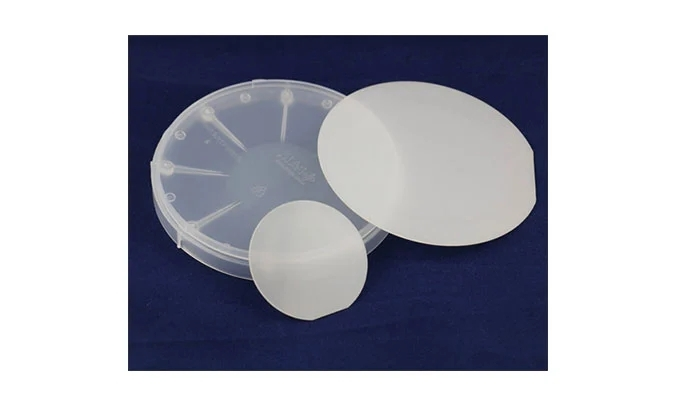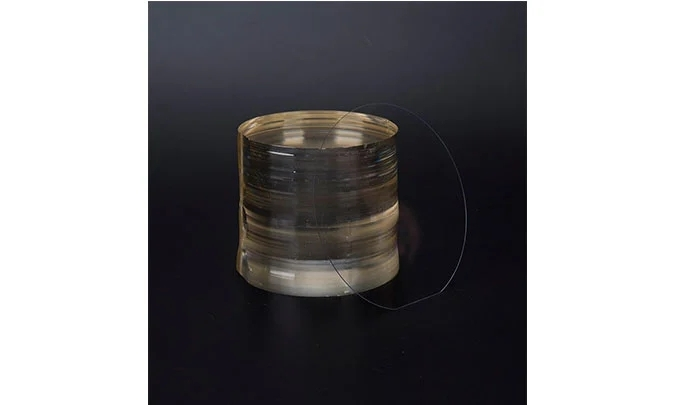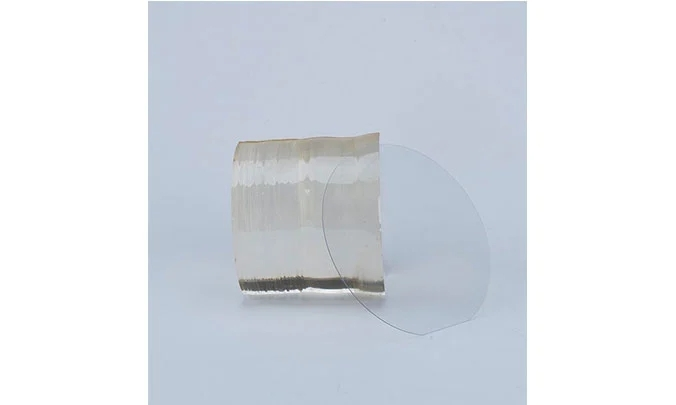Lithium niobate (LiNbO₃) is a synthetic crystal that has become a cornerstone in various advanced technologies due to its unique properties. This article explores the applications, composition, and industry significance of lithium niobate, including a detailed comparison with lithium tantalate (LiTaO₃). We’ll also delve into its role in photonics, substrates, and wafers, and how it stands out in the competitive materials market.

Lithium niobate is widely used in optoelectronics, telecommunications, and acoustic wave devices due to its piezoelectric, electro-optic, and nonlinear optical properties. Here are its primary applications:
Photonics:
Lithium niobate is a key material in photonic devices such as modulators, waveguides, and integrated optical circuits. Its electro-optic effect allows for efficient light modulation, making it essential for high-speed data transmission in fiber-optic networks.
Telecommunications:
LiNbO₃ wafers are used in surface acoustic wave (SAW) devices and optical modulators, which are critical components in 5G networks and other communication systems.
Acoustic Sensors:
The piezoelectric properties of lithium niobate make it ideal for sensors, resonators, and filters in industrial and medical applications.
Laser Technology:
Lithium niobate crystals are used in frequency doubling and laser generation due to their ability to manipulate light efficiently.
Quantum Computing:
LiNbO₃’s nonlinear optical properties are being explored for use in quantum photonics, making it a promising material for future technologies.

Lithium niobate substrates and wafers are essential in manufacturing high-performance devices. Their key features include:
High Thermal Stability: Maintains performance across a wide temperature range.
Optical Transparency: Suitable for visible and infrared wavelengths.
Piezoelectric Efficiency: Enables precise control in acoustic and optical applications.
Common applications include optical modulators, SAW devices, and infrared windows.

While both lithium niobate (LiNbO₃) and lithium tantalate (LiTaO₃) are used in similar applications, they have distinct properties:
| Property | Lithium Niobate (LiNbO₃) | Lithium Tantalate (LiTaO₃) |
|---|---|---|
| Crystal Structure | Trigonal | Trigonal |
| Electro-Optic Effect | Strong | Moderate |
| Piezoelectric Effect | High | Moderate |
| Thermal Stability | Excellent | Excellent |
| Applications | Photonics, telecommunications | SAW devices, infrared windows |
LiNbO₃ is preferred for optoelectronics due to its stronger electro-optic effect, while LiTaO₃ is often used in infrared windows and SAW devices because of its lower cost and comparable performance.
Lithium niobate is composed of lithium (Li), niobium (Nb), and oxygen (O) in a 1:1:3 ratio (LiNbO₃). It crystallizes in the trigonal system and is known for its non-centrosymmetric structure, which gives it its unique properties.
Lithium niobate is not a perovskite. Perovskite materials have a distinct crystal structure (ABX₃), while LiNbO₃ has a trigonal structure with a different arrangement of atoms. However, both materials are of significant interest in materials science due to their unique properties.
Lithium niobate photonics is a rapidly growing field. Its applications include:
Integrated Optical Circuits:
LiNbO₃ is used to create compact, high-speed optical components for data transmission.
Optical Modulators:
Its electro-optic effect enables efficient modulation of light signals.
Nonlinear Optics:
Used in frequency doubling and parametric amplification for lasers.
| Application | Description | Industry |
|---|---|---|
| Optical Modulators | High-speed light modulation for fiber-optic communication | Telecommunications |
| SAW Devices | Filters and resonators for wireless communication | Electronics |
| Laser Technology | Frequency doubling and laser generation | Photonics |
| Acoustic Sensors | Precision sensors for medical and industrial applications | Healthcare |
| Quantum Photonics | Emerging applications in quantum computing and communication | Quantum Technologies |
| Infrared Windows | High-performance optical components for infrared imaging | Defense & Aerospace |
The global market for lithium niobate is growing, driven by demand in telecommunications, photovoltaics, and quantum computing. Key players include:
Leading Manufacturers:
Companies like Crystal Technology, Novatech, and Roditi International dominate the market.
Emerging Applications:
Research into quantum photonics and integrated optics is expanding the use of LiNbO₃.
Technological Advancements: Innovations in thin-film lithium niobate are expected to revolutionize the industry.
Lithium niobate is a versatile and indispensable material in modern technology. Its applications in photonics, telecommunications, and quantum computing highlight its importance in driving innovation. As research continues, we can expect even broader applications and advancements in LiNbO₃ technology.